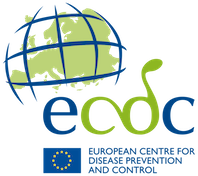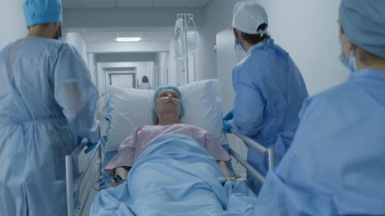WHO recommendation on influenza virus vaccines for the northern hemisphere 2012-2013 seasonArchived
One of the most important functions and outputs of the laboratory aspect of the Global Influenza Surveillance and Response System (GISRS) coordinated by WHO are biannual influenza vaccine strain selection meetings that take place each year around February and September. These scientific meetings make recommendations on the antigens to go into the influenza vaccines for the northern hemisphere (February meeting) and southern hemisphere seasons (September meeting).
Limited match between circulating A(H3N2) virus and current vaccine and information on antiviral sensitivity of current viruses.
The strain selection meeting has just taken place for the next northern hemisphere season (2012-2013) vaccines which will become available in the late summer. There is a headline report on the vaccine recommendations for next season and also a more detailed report which also contains information on the antiviral resistance and the laboratory-assessed match between this season’s vaccine and circulating viruses. (1)
The objectives of these meetings are to:
- Analyse the antigenic and genetic characteristics of influenza viruses circulating and infecting humans, taking into consideration of available epidemiological and clinical information from individual countries and regions;
- Make recommendations on the composition of the influenza vaccines for use in the northern hemisphere 2012-2013;
- Review the antigenic and genetic characteristics of recent A(H5N1) viruses that the WHO Collaborating Centres of the GISRS received and the need to develop new A(H5N1) candidate vaccine viruses for pandemic preparedness purposes;
- Review the antigenic and genetic characteristics of other subtype or variant influenza viruses, if any, infecting humans recently, and the need to develop new candidate vaccine viruses for pandemic preparedness purposes.
The meeting represents the end point of an intense period of work for National Influenza Centres who contribute viruses and detailed virological data to WHO’s six global influenza Collaborating Centres and four Essential Regulatory Laboratories who undertake more complex antigenic and genetic analyses.(2,3) On this occasion the scientists from the centres and laboratories met for three days looking carefully at the data from all across the world with the prime purpose of seeing how well the influenza viruses that have been circulating of late match the currently used vaccine antigen strains. This is with a view to whether there are other strains suitable for vaccine production that now match the circulating viruses more closely.
These discussions are undertaken privately without the vaccine producers being present. Then after a conclusion has been come to the information is communicated to industry, regulators and other interested parties at an open session in Geneva.
What was communicated on this occasion was that WHO is recommending a changed composition of the influenza vaccine for the Northern Hemisphere season 2012-13 with changes in both the A(H3N2) and B virus components:
- A/Victoria/361/2011(H3N2)-like virus, replacing the A/Perth/16/2009-like virus from the 2011-12 season
- B/Wisconsin/1/2010-like virus (Yamagata-lineage), replacing the Victoria-lineage B/Brisbane/60/2008-like virus from the 2011-12 season
- A/California/7/2009 (H1N1)pdm09-like virus, the same as during the 2011-12 season
These are also different from what was recommended for the coming 2012 Southern Hemisphere season (see here). Further antigenic and genetic characteristics of recent seasonal influenza viruses are described below. Such double changes in the antigen are quite common. There have been more than ten occasions when this has happened since the late 1970s.
More Detailed Analysis: (1)
Influenza A(H1N1)pdm09 viruses: The A(H1N1)pdm09 viruses remained antigenically homogeneous and closely related to the earlier vaccine virus A/California/7/2009 hence there was no change in the recommendation. The sequence analysis of the HA genes of A(H1N1)pdm09 viruses indicated that the viruses fell into at least eight genetic groups but these were antigenically indistinguishable.
Influenza A(H3N2) viruses: The recently circulating viruses were antigenically heterogeneous. An increasing proportion of viruses circulating in 2012 showed reduced reactivity with ferret antisera raised against earlier vaccine virus A/Perth/16/2009. Hence a change in this vaccine component was recommended. Recent A(H3N2) viruses showed higher titres with ferret antisera raised against A/Victoria/361/2011-like reference viruses. The HA genes of recent viruses fell into two phylogenetic groups represented by A/Victoria/361/2011 (genetic group 3) and A/Brisbane/299/2011 (genetic group 6), with the majority falling within genetic group 3.
Influenza B viruses: Two rather distinct lineages known as Victoria and Yagamata have been circulating for some time. The B/Victoria/2/87 and the B/Yamagata/16/88 lineages were observed in similar proportions in some countries, suggesting an increase in the prevalence of viruses of the B/Yamagata/16/88 lineage. In China, however, viruses of the B/Victoria/2/87 lineage predominated, except in China Hong Kong Special Administrative Region (China Hong Kong SAR) where the two lineages were present in approximately equal proportions.
The majority of viruses of the B/Yamagata/16/88 lineage were antigenically distinguishable from the previous vaccine virus of the B/Yamagata/16/88 lineage, B/Florida/4/2006, and antigenically similar to recent reference viruses, e.g. B/Wisconsin/1/2010. Hence the latter was now recommended as a vaccine strain.
The majority of viruses of the B/Victoria/2/87 lineage were antigenically closely related to the current vaccine virus B/Brisbane/60/2008, and the HA gene sequences of the viruses belonged predominantly to the B/Brisbane/60/2008 genetic clade. The WHO recommends that for those wanting to use of a B/Victoria/2/87 lineage vaccine virus, either in trivalent vaccines or in quadrivalent vaccines containing two influenza B viruses the B/Brisbane/60/2008-like viruses continue to be the most appropriate for the vaccines.
Antiviral Resistance (1)The vast majority of the influenza viruses tested were sensitive to the neuraminidase inhibitors (oseltamivir or zanamivir). What resistance that was found was only to oseltamivir in a small proportion of the A(H1N1)pdm09 viruses, themselves uncommon viruses this season in Europe.(4) All the A(H3N2) and B viruses were also sensitive to the neuraminidase inhibitors. A small number of viruses were tested against the newer neuraminidase inhibitors peramivir and laninamivir and were found to be sensitive. In contrast almost all the A(H3N2) and A(H1N1)pdm09 viruses that were tested through gene sequencing were found to have markers indicating resistantce to M2 inibitors, like amantidine and rimantadine.
ECDC Comment: 28/02/2011
The most important finding here is that there is some limited mis-match between the A(H3N2) vaccine used this season and the currently circulating A(H3N2) viruses. These are by far are the predominant viruses this year (96% in the most recent week of analysis from the European Influenza Surveillance Network.(4) That is important information for clinicians and authorities advising them especially when it comes to treating patients with flu-like symptoms, even if they have been vaccinated. If it is influenza then it will almost certainly be a strain that is susceptible to a neuraminidase inhibitor.
However a degree of antigenic mismatch like this does not necessarily mean that the vaccine loses effectiveness.(5) That can only be determined through field vaccine effectiveness studies with laboratory confirmation and those studies are underway this season in Europe under the I-MOVE collaboration.(6) Results for this season will be made available as soon as there are enough data to give solid analyses.
These are only recommendations concerning next season’s influenza vaccine and it is national or regional authorities that finally approve the composition of vaccines. However they almost always they follow the WHO recommendations. Then it is national authorities that make the recommendations on the use of the vaccines for example on who they should be offered to. ECDC and WHO have standing guidance and recommendations on this respectively which countries draw on.(7,8)
Though it may seem like a long time before the start of influenza immunizing in the autumn in Europe such time is necessary in order that the regulatory laboratories create the necessary reagents for vaccine production and for industry to produces the three or four influenza antigens that go into the vaccines (four antigens because some companies are starting to make quadrivalent vaccines with both the Victoria and Yagamata B virusantigens).(1)
It is important to appreciate the intense scientific and administrative work that goes into this biannual process. That is especially the case this year where the start-time for collecting viruses and analyzing them was delayed as the influenza season itself began considerably later than usual in the Northern Hemisphere.(4) Though the work is undertaken on behalf of WHO almost all of it is made possible by the resources of countries themselves. Hardly any financial support comes from WHO to National Influenza Centres (essentially national influenza reference laboratories) or to the WHO Collaborating Centres and Essential Regulatory Laboratories. Some support may eventually flow through eventually through the Pandemic Influenza Preparedness Framework negotiated in the years 2007 to 2011 and concluded at the World Health Assembly in May 2011.(9,10)
Of course what is difficult for this process is that the scientists are having to make informed predictions as to what viruses will be circulating ten or more months hence in the winter of 2012-13. WHO and the scientific influenza community are always trying to make improvements in the process.(11) But with the long lead time and the changeability of influenza viruses the predictions can be incorrect. As more than one pundit has observed, “it is very difficult to make predictions, especially about the future”.
Summary prepared by Vicente Lopez Chavarrias and Angus Nicoll with assistance from WHO staff






